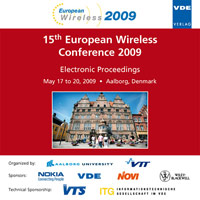Performance comparison of PRC based PAPR reduction schemes for WiLAN Systems
Conference: European Wireless 2009 - 15th European Wireless Conference
05/17/2009 - 05/20/2009 at Aalborg, Denmark
Proceedings: European Wireless 2009
Pages: 6Language: englishTyp: PDF
Personal VDE Members are entitled to a 10% discount on this title
Authors:
Hussain, Sajjad; Louët, Yves; Palicot, Jacques (SUPELEC/IETR - Campus de Rennes, Avenue de la Boulaie, CS 47601, 35576 Cesson-Sévigné Cedex, France)
Abstract:
High Peak to Average Power Ratio (PAPR) is a main area of concern in multi-carrier communications as in Orthogonal Frequency Division Multiplexing (OFDM) modulated transmission. Several techniques have been devised to reduce the PAPR of the OFDM signal. One of these PAPR reduction techniques is based on Peak Reducing Carriers (PRC) concept where a set of sub-carriers is not used to transmit information but to reduce the temporal signal’s peak. There exist different methods to generate the peak reducing carriers like Geometric method, Gradient method and Second Order Cone Programming (SOCP) based optimization method. This paper compares the performance of these three PRC methods for a Wireless Local Area Network (WiLAN) system in terms of PAPR reduction capabilities and computational complexities while justifying that neither in-band nor out-of-band interference is generated upon the application of these methods. For an IEEE 802.11g standard, it is found that, on average, SOCP reduces ca. 2.5 dB more PAPR than Geometric method but its complexity is 18 times the complexity of Geometric method. While Gradient method lies in between these two methods regarding performance and complexity criteria, this paper presents a trade-off between PAPR reduction performance and complexity for three different PRC implementation schemes.


